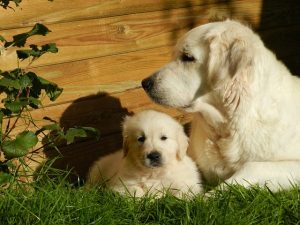Discover the best ways to train your pup in this comprehensive guide. Learn the latest techniques and tips to make your furry friend a well-behaved and happy pup!
Getting Started Training Your Pup
Bringing home a new puppy is an exciting experience, but it can also be challenging, especially when it comes to training. Proper training is essential for the well-being of your furry friend and your family. A well-trained dog is not only happier, but it’s also safer to have around your home.
However, with so many training techniques, tools, and tips available, choosing the best way to train your pup can be overwhelming. In this article, we’ll provide you with the latest techniques and tips to train your pup successfully.
Positive Reinforcement
 One of the most effective ways to train your pup is through positive reinforcement. Positive reinforcement means rewarding your puppy when they exhibit good behavior. This technique focuses on encouraging desirable behavior rather than punishing bad behavior.
One of the most effective ways to train your pup is through positive reinforcement. Positive reinforcement means rewarding your puppy when they exhibit good behavior. This technique focuses on encouraging desirable behavior rather than punishing bad behavior.
When your pup exhibits good behavior, such as sitting on command or using the designated potty area, reward them with a treat, praise, or a toy. This type of training is effective because it associates good behavior with positive reinforcement, leading your puppy to repeat the behavior.
Socialization
Socialization is another important aspect of training your pup. It refers to exposing your pup to different environments, people, and animals, which helps them adapt to different situations and avoid developing negative behaviors.
Socialization should be done from an early age and should be a continuous process. Take your puppy to various places and introduce them to different people, animals, and situations. This will help your pup develop confidence, learn how to interact with others, and reduce their anxiety in new environments.
Crate Training
 Crate training is another popular training technique that is beneficial for both you and your puppy. Crate training helps your pup develop good behavior, such as not chewing on furniture, and also provides them with a safe and comfortable space.
Crate training is another popular training technique that is beneficial for both you and your puppy. Crate training helps your pup develop good behavior, such as not chewing on furniture, and also provides them with a safe and comfortable space.
When crate training, start with gradually introducing your pup to the crate by leaving treats inside or feeding them their meals in the crate. Once your pup is comfortable inside the crate, gradually increase the duration they spend inside.
It’s important to use the crate only as a positive reinforcement tool and not as a form of punishment. Your pup should see the crate as their safe and comfortable space where they can relax and sleep.
Consistency
Consistency is key when it comes to training your pup. Make sure all members of the household are consistent with training methods and techniques, use the same commands when teaching, and reward good behavior consistently. This consistency will help your pup understand what is expected of them and what behavior has positive or negative consequences.
It’s important to avoid rewarding bad behavior or punishing your pup physically. These techniques can lead to aggression or fear-based behavior, which is harmful to your dog’s well-being.
Seek Professional Help
If your pup is exhibiting negative behavior or you’re finding it difficult to train them, seek professional help from a certified dog trainer. A professional trainer can help you identify the root cause of negative behavior and provide you with the right tools and techniques to train your pup effectively.
Conclusion
Training your pup is essential to ensure their well-being, happiness, and safety. The best way to train your pup is through positive reinforcement, socialization, crate training, and consistency. Avoid punishing your pup physically or rewarding bad behavior.
Remember, training your pup is a continuous process, and it requires patience, commitment, and time. With consistency and the right techniques, you’ll be able to train your pup successfully and enjoy a happy, well-behaved furry friend.